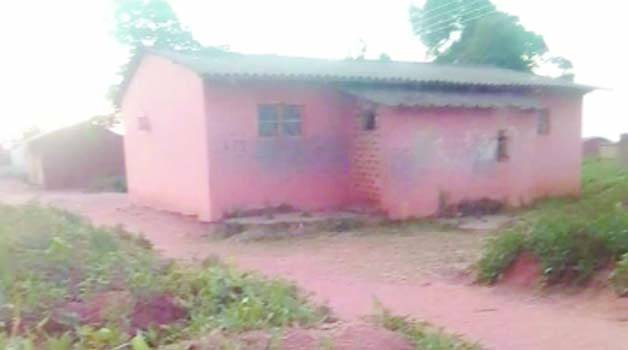
By JOWIT SALUSEKI in Mpika–
MPIKA district, the birthplace of late fifth President Michael Sata, alias King Cobra, is undergoing major transformation in terms of development.
These developments are visible in sectors such as health, education, agriculture, road- network, water and sanitation.
However in Chitulika Village in Mpika district, one historical building, which is the Sata family house is almost falling apart because it has seen better days.
The structure is so dear not only to the people of the area but to most Zambians.
The building, which is overseen occasionally by a caretaker, is located less than 800 metres from the busy Great North Road on the left hand side as one heads towards Chinsali.
For those who are not familiar with the district, Mpika is a fast growing town in Muchinga Province.
It lies where the Great North Road branches off to Kasama and Mbala and another highway goes towards Nakonde and all the way to Tanzania.
Currently, Mpika district boasts of a new Michael Chilufya Sata Hospital which was commissioned in 2015 by President Edgar Lungu.
The ultra-modern health facility is located on the Mpika –Kasama Road.
A dual carriage way constructed by the Chinese government was commissioned last year.
It is a marvel to see in the transit district.
Despite the development projects which Mpika currently boasts of, Mr Sata’s family house has remained in ruins and needs serious attention.
Clement Mboni, a veteran of Chitulika Village, called on the National Heritage and Conservation Commission (NHCC) to preserve the heritage of the house by turning it into a national monument.
Mr Mboni, who used to work in the mines until he was retired on medical grounds on January 13, 1990, said Mr Sata’s family house was supposed to be turned into a national monument so that the legacy of the fallen leader can be preserved.
“This house has fond memories of Mr Sata’s humble beginnings as a simple person from a modest family who hailed from Chitulika Village until he ascended to the presidency against all odds in 2011,” Mr Mboni said in an interview.
Similar sentiments were echoed by Elina Tindwa of the same area, who relocated from Kitwe to live in Chitulika Village in 1968 after the death of her husband.
Ms Tindwa said the Sata family house can be turned into a tourist attraction.
She was elated that the Chinese government had honoured Mr Sata by constructing a dual carriage way from Malashi area to somewhere near the weighbridge in Mpika.
Mr Sata, Zambia’s fifth president who died in London, United Kingdom (UK) at the age of 77, will be remembered with equal affection and derision as “King Cobra”.
He was a seasoned and astute politician who hailed from the vast Chitulika Village.
Zambians loved him, while others loathed him, but in his prime, Mr Sata was a charismatic and witty speaker.
He once belonged to the United National Independence Party (UNIP), then led by late Kenneth Kaunda, Zambia’s first president, but later switched to the Movement for Multiparty Democracy (MMD).
When the MMD thwarted his presidential ambitions, he broke away to form the Patriotic Front (PF) in 2001.
Mr Sata finally achieved his life-long ambition to be president at his fourth attempt, winning elections in 2011 and unseating the incumbent Rupiah Banda.
The irony is that after all his efforts, he was not able to finish his first term.
Instead, he became the second Zambian president to die in office.
For some months in 2014, he had not been seen in public due to ill health.
His last public appearance was in September when he managed to briefly attend the opening of Parliament in Lusaka.
Born in 1937, Mr Sata grew up a devout Catholic and worked as a police officer, railway man and trade unionist during colonial rule.
Mr Sata’s first marriage was to Margaret Manda.
He later married his second wife, Christine Kaseba, who became first lady of Zambia during his presidency.
He had a Bachelor in Political Science from Atlantic International University.
After independence, he spent time in London as a railway porter, and then moved to Zambia where he worked for a taxidermist company.
It was in the 1980s that he rose to prominence.
As governor of Lusaka, he quickly earned a reputation for hard work.
Later, he became known as a populist man of action at the country’s health ministry.
After Frederick Chiluba defeated Dr Kaunda in 1991, Mr Sata became one of Zambia’s most instantly recognisable faces.
Under the MMD, he served as minister for Local Government, Labour and, briefly, Health where he said his reforms brought sanity to the health system.
In 1995, he was appointed as minister without portfolio, the party’s national secretary during which his political style was described as “increasingly abrasive”.
As he worked his way up through Zambia’s rough and tumble political scene, he quickly gained a reputation for abrasiveness.
During his days under President Chiluba as minister without portfolio, Mr Sata himself admitted that he “was the minister for the MMD”, his party at the time.
In 2001, President Chiluba nominated Levy Mwanawasa as the MMD’s presidential candidate for the 2001 election.
In frustration, Sata left the MMD and set up a new party, the PF.
He contested the 2001 election but did not do well—his party only won one seat in Parliament.
Mr Sata conceded defeat and continued to campaign.
Mr Sata contested the September 2006 presidential election as a populist championing the causes of the poor.
When Mr Sata was finally elected in 2011, he looked as if he would keep his election promises to tackle corruption and create jobs and prosperity.
He died on October 28, 2014.






